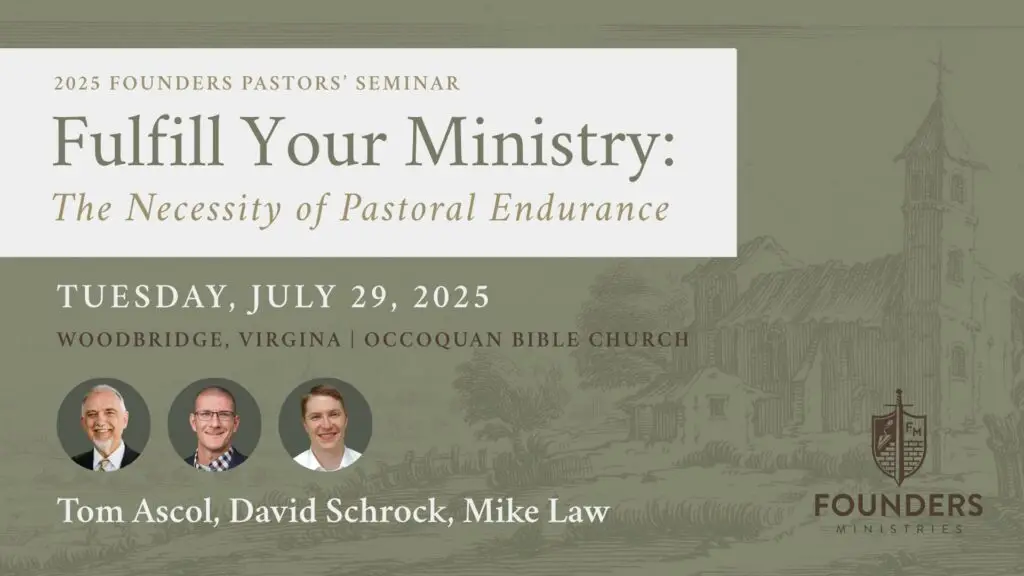Back around 1980, Jay Kesler (President Emeritus of Taylor University) was addressing a meeting I attended, and I was much taken by a self-effacing comment he made by way of counsel. At the time, he was head of Youth for Christ, and he offered us a cautionary word about stifling dissent through gratuitous deployment of the language of Zion. He described his former practice of prefacing recommendations to his board with declarations like “After much prayer, God has shown me that this is the budget we need.” Hearing a round of this sort of thing, one board member said something along the lines of, “I didn’t come up here from Texas to vote against God. Just tell us what you have and your reasons for it, and let us decide.”
Look, we assume that everyone has been praying about matters on the table, and we’re all trying to “think God’s thoughts after Him,” in the words of seventeenth-century astronomer Johannes Kepler. And, sure enough, God answers our prayers for clear thinking. But for a leader to identify his position with God’s good pleasure is to imply that those who have a question or an objection are speaking from the spiritual badlands. Kesler didn’t mean it this way. He and others taking this approach are likely just saying they did their due diligence, but the result can be the same.
Whether or not this is a conscious rhetorical device, meant to disarm dissenters, it can be effective. But “effective” doesn’t mean “admirable.” In that connection, let me mention a few communication strategies that, in my estimation, injured the proceedings of the SBC’s annual meeting this June in Nashville. And as for the posted image you see, it’s a photo of a leaf blower, set on mulch mode. It represents both blowing hot air into the room and mulching the comments of gainsayers. (Ours warns that sparks from the machine can ignite dry vegetation, and some web sites say that the blast can melt snow if not ice.) Of course, the messengers as well as the platformed personalities can generate hot air and mulch things that shouldn’t be mulched, but the flow of discourse is very much in the hands of the officers, so let me focus there.
PR
The Convention is largely a public relations event, with the various entities celebrating achievements and promoting agendas and programs. Good stuff per se, an excellent occasion to tell glad stories and enlist folks to advance their cause, e.g., Guidestone’s Mission:Dignity (supplemental funding for the families of nearly two-thousand ministerial retirees in need). I’m familiar with the cause, having served as the Executive Committee’s Vice-President for Public Relations (later “Convention Relations”) from 1991 to 1995. That’s why we started SBC LIFE magazine, with the premiere issue distributed at the 1993 convention in Houston.
Not surprisingly, we also dealt with more than happy talk, for there were harsh critics requiring an answer. If you’ll recall, those were the days when we changed the bylaws to exclude churches affirming homosexuality (the matter being brought to the forefront by two wayward churches in North Carolina). The backlash was considerable, and I found myself defending our decency against many critics, e.g., on Alf Nucifora’s radio talk show on WSB Atlanta and in response to the fulminations of Deb Price, lesbian columnist for the Detroit News.
And there were other flash points, as when the Home Mission Board (now NAMB) released a county-by-county study showing that a great many Americans were lost. In this case, I found myself on The Bertice Berry Show (WTTW Chicago/PBS), positioned between a Pentecostal preacher who said that women who wore slacks were likely hell bound and three others who found our eschatology onerous (an atheist lawyer, a Loyola professor, and Yechiel Eckstein, head of the Fellowship of Christians and Jews).
I found the same sort of challenge when I did staff work for the Army’s Office of Chief of Public Affairs in the Pentagon. One prickly reporter would call for a statement on the rumor that spouse abuse was rampant in the military, another suggesting that slack security allowed the theft of a surface-to-air missile that might have brought down TWA flight 800 off Long Island, and yet another taking up the offense of some Texans upset that the north side of Fort Hood got an interstate exit ahead of others wanting the same. In a number of instances, our commander or designated spokesman would convene a “murder board” to throw out hard and insulting questions for a “meet the press” tune up. Journalism can be a blood sport. Of course, the military needs accountability (and, by the way, so do journalists).
So I know what it is to frame presentations and responses in a hostile environment. But it gets tricky when the platform appointees start to treat the messengers as problematic. Let me give some examples of what I mean.
“Unity” Prayers
In John 17:22-23, Jesus, in prayer, expresses his desire and purpose that believers would “be one as we [he and God the Father] are one,” the result being “complete unity.” But that’s not a prayer for just any old kind of unity. It’s unity in life-giving truth, and until you sort out competing narratives and properly evaluate conflicting agendas, then whatever unity you might achieve isn’t clearly the John 17 sort.
Which brings me to the Tuesday morning displacement, of the “Recognition of Past Presidents,” slotted for ten minutes. Instead, the chair fielded a motion from a few past presidents (not farfetched to think they might not favor the presidential aspirations of Mike Stone and Randy Adams) that we instead engage in a time of prayer for the convention, one majoring on harmony, one running longer than the original “recognition” time period, one facilitated seemingly by already-prepared by Bible text slides.
And so, at the direction of the chair, we turned to our neighbors, held hands, and prayed in between platform prayers by these presidents. I’m confident that God heard and answered positively in many cases. And one would have to be, or at least come off as, a leprous churl to object. But context is important. If unity is the point of the meeting, then you have to ask who’s complaining over things that have been going on. Who’s the one to ask prickly questions or find fault in the performance of the establishment? Obviously, it’s the enemy of unity, against whom we’re invoking God collectively.
The story is told of a man seeking damages in court. He, the plaintiff, was injured in a wreck, and the defense attorney brought up something he said right after the incident: “Didn’t you claim you were all right? So why we here today?” But those present at the crash scene recall that he’d been hit by a horse trailer that fish-tailed into his lane. When the troopers arrived, grievously-broken horses were lying on and beside the highway, and they were put down one at a time by a pistol shot to the head. When they came to the plaintiff and asked him if he were okay, he hastened to say, “Just fine, thank you.” Again, context is important.
Think for a moment how this might have played back during the conservative resurgence. What if the seminary presidents who were harboring biblical “errantists” had called for and then been given the platform to lead special prayers for unity? Wouldn’t that have seemed manipulative, as a subtle way to cast a bad light on the folks who’d turned out in great numbers to elect trustees who’d turn things around?
No, I’m not lumping in those SBC presidents who made the motion with those early seminary presidents. They’re inerrantists and remarkable pastors to a man. But the question is whether prayer was being employed to help remove a stinger when something needed to be stung, in this case Resolution 9 from the 2019 convention.
Go Easy on Featuring Tears
Back when the government was starting to ease restrictions on congregational attendance, I was on a Zoom deacons meeting for the church I was serving as interim. The topic that evening was our mask policy. Some wanted them required of everyone. One said he and his family hadn’t missed church for over a decade, but they weren’t coming back till they could be sure they weren’t exposed to the unmasked. Another said that masks were way to show we cared. And in the months leading up to the meeting, we’d heard some say, essentially, “If just one life were lost because of our relaxing caution, it would be one too many.” I suggested that this approach could be a formula for not reopening for a very, very long time, and I was glad when one deacon proposed that we cordon off the left side of the auditorium as a mask-only seating section. It was approved, and it worked out well.
As we all know having come through that COVID season, this was a delicate, awkward, and tense discussion. Nobody wanted to be responsible for killing grandma. But I’m thankful none of the deacons brought his frail grandmother to the call, with her standing tearfully behind him throughout the entire meeting, or with a weeping family member on the screen, one who was heartbroken by recent news that a loved one had passed. That would have been unfair, bringing a bicycle to a foot race. And besides, another deacon could have brought a sobbing elderly friend to the screen to beg us for permission to once again join in un-stifled congregational singing, the heretofore greatest joy of her life. This sort of gamesmanship could be employed in many ways on countless matters.
Thank God for tears, and yes, there are tender souls inclined to shed them. (And, by the way, as I get older, I find myself needing to dab my eyes more often in movies.) But God protect us from those who crank them up and display them for effect or advantage, or report them as badges of honor (as in “I wept over the sad spectacle”) or prescribe them (as in “Anyone who can preach this passage without weeping is defective”).
Which brings me to the motion to add a second layer of scrutiny in the evaluation of the Executive Committee’s handling of sex abuse charges in one or some churches. Sure enough, the man on camera at a floor mike (or ‘mic’ if you prefer, even though it looks like “mick”) stood beside a tearful lady, presumably the victim of abuse. Whether he brought her with him or she was just there to speak next, I don’t know, but the image was potent.
Which brings me to something that happened the previous day. My wife and I were walking down the concourse outside the assembly hall when we were stopped by a young man who recognized me, perhaps a former student. He asked, “Did you hear that Mike Stone just drove a sex abuse victim to tears by his exchange with her? What do you think of that?” When I came back with, “Well, I don’t know the circumstances,” he retorted accusingly, “Can you think of any circumstance where it’s okay to bring an abuse victim to tears?” We broke off the conversation as best we could and moved on, remarking to each other how weird the encounter had been, like a setup by someone working the hall for the anti-Stone crowd.
It soon occurred to me that you can “bring someone to tears” quite easily and quite innocently, depending on the person. For instance, I think back to a metaphysics class team-taught with Doug Blount and Jonathan Arnold, the three of us formerly of SBTS. As the semester wound down, the students took turns reading their papers for feedback, including criticism. Things were going along as normal until I offered an objection to an item in one young lady’s paper, and she began to cry. Others had handled our criticism just fine, but no one dared to tell her, “Come on! Grow up.” No, it had a chilling effect on the proceedings, and several seemed to give me a “How dare you, Sir!” look. There’s no answer to the argument of tears, because it’s not an argument at all. A spontaneous event at best, a calculated exhibition at worst. Either way, it shuts down discourse.
That’s the way it rolls, and shame on anyone who platforms the rolling to crush the opposition. It’s a form of agitprop, like “waving the bloody shirt,” designed to drive emotions without the heavy lifting of measured reasoning. And, boy, does it work. But, hey, “I didn’t come up from Texas to vote against tears.”
The De Facto Filibuster
A number of first-timers expressed surprise at how quickly they heard, “Time for discussion has expired.” Maybe they’d come across the old saying, “The annual meeting is a wonderful time of fellowship and inspiration with a little business thrown in,” as if the business were a sort of unfortunate activity—“Dirty work, but I guess somebody has to do it as long as they keep it brief.” Well, of course, with thousands in the hall (many of us who feel a sermon coming on), you can’t give space for every comment and parliamentary maneuver, or even most of them. But I do think they might be able to tease out at least another hour or so for business. Platform presentations can be trimmed, supplemented by handouts. You can do a lot with thirty minutes, especially if you know that it’s important for messengers to go home with the sense that thoughtful people got a hearing. Otherwise, they can get the impression that the much-talking by the leaders amounts to a filibuster.
Mulching Messengers
Resolution 9 on critical race theory and intersectionality was a disaster. At least four state conventions (Georgia, Tennessee, Kentucky, and Ohio) passed resolutions disparaging it one way or another. Not surprisingly, a host of messengers came to this year’s convention—more than doubling the previous attendance—to countermand or supplant what the 2019 Resolutions Committee had wrought. Also, not surprisingly, this year’s committee was loathe to pointedly rebuke the work of the previous committee, both groups handpicked by the same president. So they served up a generic resolution with application to thousands of possible issues, going abstract on this resolution while getting quite specific on others, e.g., regarding repeal of the Hyde Amendment.
When a messenger from Nevada said the resolution was too vague and that the committee had shown a lack of courage in this regard, what followed from the chairman was breathtaking in its “shock and awe” firepower. Yes, the messenger had “poked the bear” in saying they lacked spine as well as clarity, but the viciousness of the response caught the room by surprise. Even those who weren’t enthralled by everything the chairman said were dazzled by the event. (I’m reminded of the scene in Tommy Boy when the presumed-dead deer they’d thrown into the back seat woke up, kicked out the windows and convertible top and ran off into the night. Chris Farley stood in the middle of the highway and exclaimed, “That was awesome!”)
In this case, the speech was a cornucopia of invective and misdirection worthy of classroom analysis. In three and a half minutes, he passionately delivered up a textbook array of fallacious arguments, including ad hominem, ad populum, non-sequitur, and false-dichotomy. He managed to insult those who indignant at CRT/I (suggesting they cared more about this than evangelism); to mock those who objected to CRT curricula in the schools while ignoring the teaching of evolution (as if they hadn’t objected, or wouldn’t); to report that after reading through the Bible scores of times, he hadn’t found ‘CRT’ except in the form of “Christ Returns Triumphantly” (which raises a number of hermeneutical/applicational questions, including “Then why did Resolution 9 push something not found in the Bible?” and “Along the way, did you find the words ‘Trinity’ or ‘inerrancy’ in the Bible?” and “Actually, for starters, the Tenth Commandment slams envy and the Bible disdains “social justice” (equality of outcomes), both of which feed the CRT program. Right?”). He peppered his speech with soteriological/eschatological moonshine (“If some people were as passionate about the gospel as they were about CRT, we’d win this world to Christ tomorrow”), with pragmatic rubbish (suggesting we should be beholden to what the secular media thought of us), and with the tricky prescription that we must build bridges to those who would find our dislike of CRT off putting. All this delivered in a heated, in-your-face tone. “Take that, you deplorables!” Wow, did we get mulched, and a bunch of folks applauded the mulching.
(As an aside, I have to wonder if a few of our pastor/elder-authority champions have become impatient with congregational polity. This might account for some of the annoyance at or bemused patronization toward the peanut gallery. If you’re not accustomed to being crossed in a congregational forum, your ability to handle dissent with genuine respect could atrophy.)
So, anyway, as the Arab proverb puts it, “The little dogs barked, and the caravan moved on.”
One more thing: Yes, in this piece, I’ve blown some hot sparks and done some mulching, so who am I to object? Well, verbal sparking and mulching aren’t wrong per se. Both are done appropriately in the Bible. So the big question is not whether you’ve done it, but rather whether you’ve done it fairly. That’s the issue. God help us all as we try to sort out these matters. It’s not easy.
This article was originally posted at www.markcoppenger.com and is reposted here with permission.





























